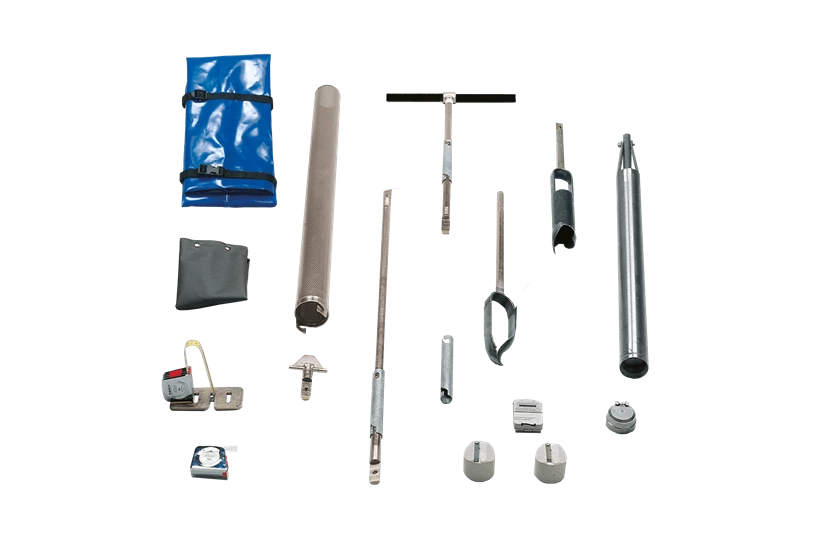
The standard Hydraulic conductivity test set is suitable for measurements to a depth of two metres. The Hooghoudt variant goes up to a 5 metres. The complete set can be transported in the field in a strong carrying bag.
Method
When measuring hydraulic conductivity of soil, the auger hole method according to Hooghoudt can be applied for direct measurement in the field. With this method, the permeability of soil can be determined relatively fast and with a limited number of instruments.
The principle of this method is quite simple: a hole is bored in the ground to a certain depth below the groundwater level. After some time, the hole will fill with water up to said water level. This water is consequently bailed out. The time it takes for a new water level to establish itself is recorded. Using formulas and/or nomograms, this speed with which the water rises can be translated into the average permeability factor of the various soil layers.
The depth of the bore hole is dependent upon the groundwater level and the thickness and the permeability of the successive layers in the ground profile.
Product variants
The standard set (09.01.SA) is suitable for measurements to a depth of 2 metre. For measurements to a depth of 5 metre there is the Hydraulic conductivity test kit, Hooghoudt set (09.01.SB). This set includes the same items as the standard set; however, the 1-meter-long filter has been replaced by an extendable filter with a total length up to 5 metres (also including extension rods for the auger).
Applications
Set contains
| Hydraulic conductivity test kit | |
|---|---|
| Maximum measuring depth | 2 m |
| Reading accuracy | 1 mm |
| Registration type | Manual |
| Package size | 117 x 27 x 23 cm |
| Weight | 26 kg |

Need advice choosing the right product for your application? Our specialist Sandra is happy to help.